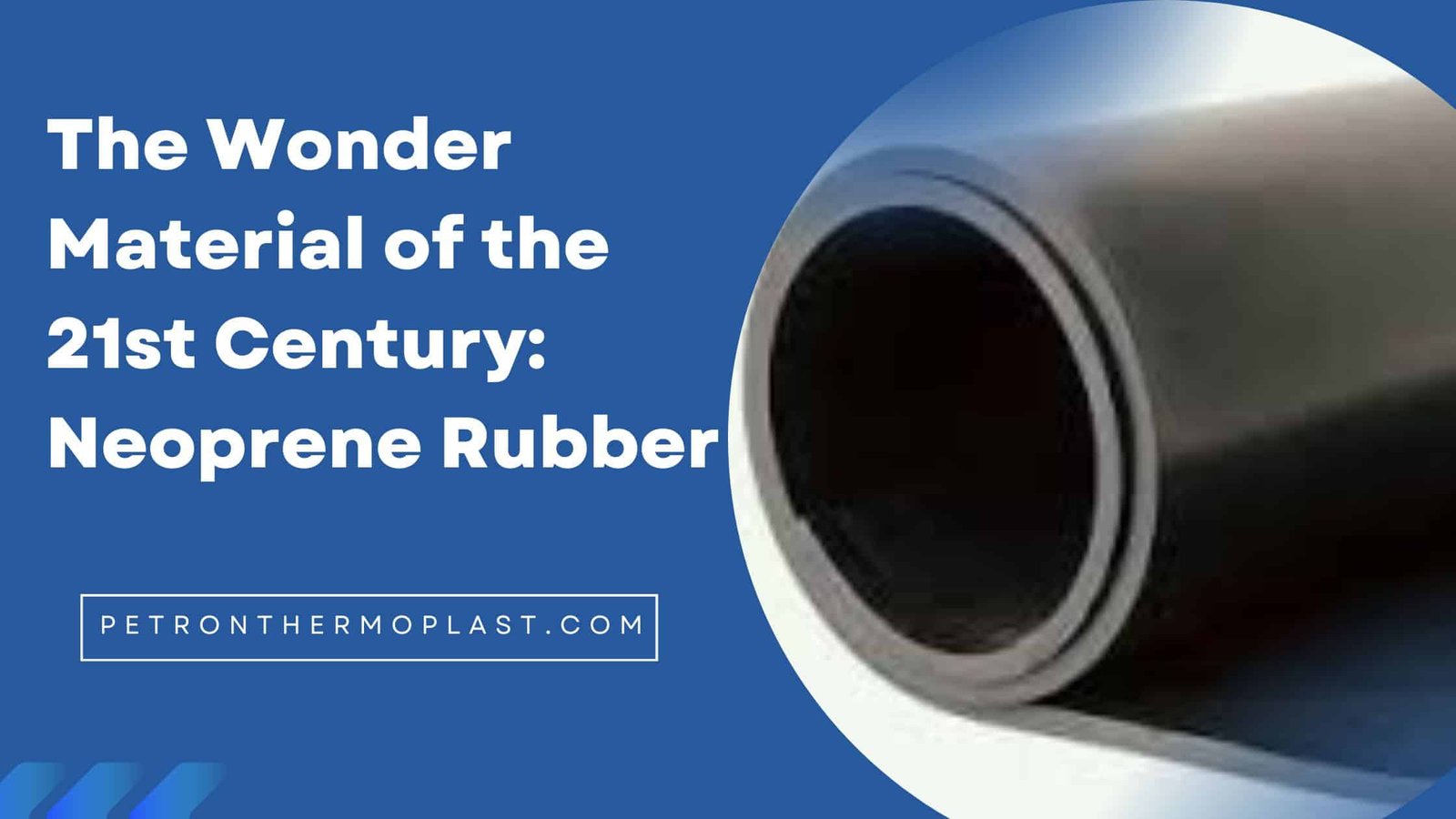The Wonder Material of the 21st Century: Neoprene Rubber
Neoprene rubber sometimes referred to as polychloroprene, has always been an excellent material to keep people warm in the winter months and cool during the hot summer months. While many different kinds of Neoprene are available, this article will focus on the most popular neoprene rubber used today. Here is some information on each type of rubber so that you can decide which would work best for your needs.
Here Petron Thermoplast will discuss why it is the wonder material of the 21st Century, and we will focus on some aspects of the rubber.
Neoprene Rubber
Neoprene rubber is a synthetic material often used to make wetsuits, insulation, and footwear. It’s made from polychloroprene, a petroleum-based elastomer. Polychloroprene is highly resistant to oils, greases and solvents. It makes rubber an excellent material for waterproofing applications. The versatility and elasticity of the rubber also allow it to be cut into various shapes and sizes while still retaining its form. This flexibility has allowed the rubber to be integrated into many different industries where it can provide protection against chemicals or withstand high temperatures without deterioration.
It was first produced in 1928 by DuPont chemist Roy J.
Where does it come from?
A global rubber shortage in the 20th Century prompted scientists and businesses to investigate synthetic materials to meet the demand for industrial goliaths. Thanks to their collaboration with eminent members of academic bodies, established companies took the lead in studying synthetic substances. The business’s efforts were successful, and in 1930 they were ready to introduce new products to the world market. The novel substance, known commercially as Neoprene, is a member of the polymers family and goes by the scientific term polychloroprene.
Processing of petroleum yields neoprene. It is classified as a petrochemical compound as a result. The possibilities of this chemical are almost limitless, though. Natural chloroprene undergoes polymerization to create synthetic polychloroprene (Neoprene). From a chemical perspective, the starting and final compounds are similar but have different characteristics and properties.
Benefits of using the rubber
Neoprene rubber is a very resilient and adaptable material. This compound has certain characteristics that distinguish it from other compounds because of the way it was made.
Neoprene is impermeable and resistant to various chemical and environmental elements, such as oxidation, ozone, UV radiation, and polluting agents. In addition, Neoprene resists extreme temperature changes, allowing it to stay elastic, flexible, and, if worn, comfortable in temperatures ranging from -40 °C to +120 °C.
The benefits are:
- Neoprene, a material formed from petroleum, has complete waterproofing and moisture resistance. Neoprene fabric produces an impenetrable barrier against the elements in water or unfavourable weather conditions. It is one of Neoprene’s key characteristics, but it also comes with one of its biggest drawbacks: no breathability.
- Neoprene is a highly insulating material utilized in harsh environments because it shields users from outside influences, chemicals, and weather conditions.
- Elasticity and adaptability – as we’ve seen, Neoprene has the advantage of remaining flexible and elastic across a wide variety of temperatures. Neoprene is extremely adaptable due to this characteristic and the fact that it is moulded rather than sewn.
- Neoprene is insulating, as we’ve seen, but it can also retain heat, making it a thermo-regulating material. Neoprene enables athletes and outdoor enthusiasts to explore in harsh conditions by absorbing and holding onto body heat.
Here we can mention some also other features like:
- It surpasses the UV and chemical resistance of oils, solvents, and petroleum-based fuels
- It is very robust.
- It resists tearing and abrasion.
- It may be resistant to fire.
Applications
As we’ve seen, Neoprene has various advantages that make it an ideal material for numerous tasks. This material has never had trouble finding new applications, from sportswear to apparel, gear, and equipment.
Additionally, because it does not decay like natural rubber, it is safe for long-term projects that call for a solid substance to serve as its foundation. Although Neoprene’s applications are unavoidably evolving, some of its conventional uses include:
- Lunch bags.
- Mouse pads.
- Swimsuits.
- Sports gear.
And many others.
Is Neoprene waterproof or not?
Open-cell or closed-cell neoprene foam can be manufactured. Since the closed-cell variant has gas (nitrogen) cells, it is waterproof. Neoprene can be made more insulating and buoyant by using nitrogen gas during production.
Neoprene floats, right?
The quantity of air that Neoprene has within will determine how much water it can hold. Neoprene can absorb less water the more air it has. Nitrogen is added during the manufacturing of limestone neoprene. Since the cells don’t absorb water, the additional nitrogen boosts insulation and total buoyancy. Traditional oil-based Neoprene allows more water to sink into it since it has lesser cell penetration and a liquid foundation, which means it contains less air.
Bottom line
If you want more information on Neoprene rubber, visit the official website of Petron Thermoplast. Being the number one thermoplastic product manufacturer in India, you would get the best quality assurance from us. To explore the key features and additional data, visit the company’s official website.




